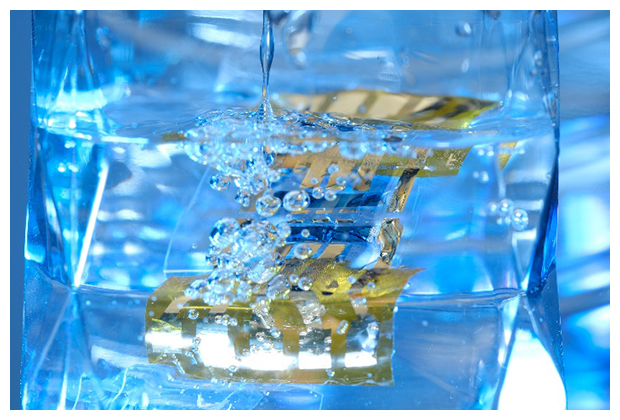2024-02-02 ミュンヘン大学(LMU)
◆この研究で創造された多原子分子は、2つ以上の原子から構成され、134ナノケルビンまで冷却されました。これは従来のテトラアトミック分子よりも3000倍以上寒い温度です。この成果は分子物理学における新たな偉業であり、エキゾチックな超低温物質の研究においても重要な進展となっています。この研究結果は今週、Natureに掲載されました。
<関連情報>
- https://www.lmu.de/en/newsroom/news-overview/news/quantum-physics-first-tetratomic-supermolecules-realised.html
- https://www.nature.com/articles/s41586-023-06986-6
超低温電場結合4原子分子 Ultracold field-linked tetratomic molecules
Xing-Yan Chen,Shrestha Biswas,Sebastian Eppelt,Andreas Schindewolf,Fulin Deng,Tao Shi,Su Yi,Timon A. Hilker,Immanuel Bloch & Xin-Yu Luo
Nature Published:31 January 2024
DOI:https://doi.org/10.1038/s41586-023-06986-6

Abstract
Ultracold polyatomic molecules offer opportunities1 in cold chemistry2,3, precision measurements4 and quantum information processing5,6, because of their rich internal structure. However, their increased complexity compared with diatomic molecules presents a challenge in using conventional cooling techniques. Here we demonstrate an approach to create weakly bound ultracold polyatomic molecules by electroassociation7 (F.D. et al., manuscript in preparation) in a degenerate Fermi gas of microwave-dressed polar molecules through a field-linked resonance8,9,10,11. Starting from ground-state NaK molecules, we create around 1.1 × 103 weakly bound tetratomic (NaK)2 molecules, with a phase space density of 0.040(3) at a temperature of 134(3) nK, more than 3,000 times colder than previously realized tetratomic molecules12. We observe a maximum tetramer lifetime of 8(2) ms in free space without a notable change in the presence of an optical dipole trap, indicating that these tetramers are collisionally stable. Moreover, we directly image the dissociated tetramers through microwave-field modulation to probe the anisotropy of their wavefunction in momentum space. Our result demonstrates a universal tool for assembling weakly bound ultracold polyatomic molecules from smaller polar molecules, which is a crucial step towards Bose–Einstein condensation of polyatomic molecules and towards a new crossover from a dipolar Bardeen–Cooper–Schrieffer superfluid13,14,15 to a Bose–Einstein condensation of tetramers. Moreover, the long-lived field-linked state provides an ideal starting point for deterministic optical transfer to deeply bound tetramer states16,17,18.



